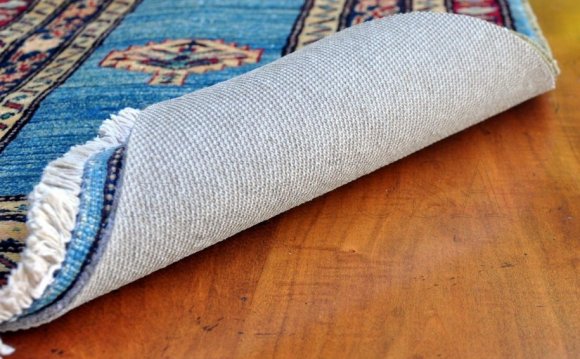
Preventing floor damage. The wrong rug pad can actually damage your floors. And because rug pads aren’t frequently moved (or even looked at), the damage can go long unnoticed.
Vinyls include a large group of plastics, including PVC (polyvinyl chloride). Many lower-cost rug pads, most coming from overseas, are made of PVC. Because PVC is made from petroleum-based chemicals and isn’t a breathable material, it’s unable to absorb or release moisture. It “sweats” against the flooring material and can damage the finish, as in the image shown here. Residue from the chemicals added for “grippiness” also transfers to the floor finish.
It’s best to avoid vinyl and PVC rug pads altogether. The cost to refinish or replace damaged flooring will far outweigh the comparatively minute cost savings from the rug pad.
Latex is a natural material that comes from trees. The composition of latex differs from plant to plant, but natural rubber, the best-known type of latex, is a good rug pad material for wood floors (more about this later).
However, rubber and synthetic latex, also known as SBR (styrene-butadiene) are frequently mixed with clay fillers as a way to reduce material costs. The clay in the rug pad breaks down into a powdery mess after one to three years. Avoid rug pads made of synthetic latex or any latex other than 100 percent rubber.









